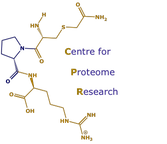The avoidance of inbreeding
Sherborne AL, Thom MD, Paterson S, Jury F, Ollier WE, Stockley P, Beynon RJ, Hurst JL. (2007) The genetic basis of inbreeding avoidance in house mice. Curr. Biol. 17, 2061-2066.[PUBMED][PDF]
Animals might be able to use highly polymorphic genetic markers to recognize very close relatives and avoid inbreeding. The major histocompatibility complex (MHC) is thought to provide such a marker because it influences individual scent in a broad range of vertebrates. However, direct evidence is very limited. In house mice (Mus musculus domesticus), the major urinary protein (MUP) gene cluster provides another highly polymorphic scent signal of genetic identity that could underlie kin recognition. We demonstrate that wild mice breeding freely in seminatural enclosures show no avoidance of mates with the same MHC genotype when genome-wide similarity is controlled. Instead, inbreeding avoidance is fully explained by a strong deficit in successful matings between mice sharing both MUP haplotypes. Single haplotype sharing is not a good guide to the identification of full sibs, and there was no evidence of behavioral imprinting on maternal MHC or MUP haplotypes. This study, the first to examine wild animals with normal variation in MHC, MUP, and genetic background, demonstrates that mice use self-referent matching of a species-specific polymorphic signal to avoid inbreeding. Recognition of close kin as unsuitable mates might be more variable across species than a generic vertebrate-wide ability to avoid inbreeding based on MHC.
Animals might be able to use highly polymorphic genetic markers to recognize very close relatives and avoid inbreeding. The major histocompatibility complex (MHC) is thought to provide such a marker because it influences individual scent in a broad range of vertebrates. However, direct evidence is very limited. In house mice (Mus musculus domesticus), the major urinary protein (MUP) gene cluster provides another highly polymorphic scent signal of genetic identity that could underlie kin recognition. We demonstrate that wild mice breeding freely in seminatural enclosures show no avoidance of mates with the same MHC genotype when genome-wide similarity is controlled. Instead, inbreeding avoidance is fully explained by a strong deficit in successful matings between mice sharing both MUP haplotypes. Single haplotype sharing is not a good guide to the identification of full sibs, and there was no evidence of behavioral imprinting on maternal MHC or MUP haplotypes. This study, the first to examine wild animals with normal variation in MHC, MUP, and genetic background, demonstrates that mice use self-referent matching of a species-specific polymorphic signal to avoid inbreeding. Recognition of close kin as unsuitable mates might be more variable across species than a generic vertebrate-wide ability to avoid inbreeding based on MHC.
